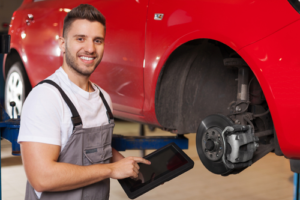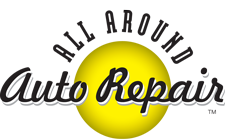Brake inspection is a critical maintenance process for your vehicle. If your braking system is compromised or in general poor condition, your car or truck will not perform as expected. You might experience handling issues, and your personal safety might be compromised due to handling challenges. You can avoid braking mishaps by commissioning regular inspections by experienced mechanics. The auto technicians will identify underlying concerns and resolve the problems. Here are essential brake inspection guidelines to help keep your vehicle in the best condition.
Check the Brake Pad Wear
 The condition of the brake pads is an important aspect of inspections whether you are looking to enhance personal safety or pass state inspections. If the pads become too worn out, the vehicle will not slow down and stop efficiently. This could result in serious road accidents. If the pads are discovered to be worn out significantly during the inspection, it is advisable to commission immediate replacement for road safety. In addition, replacement will prevent the damage of the discs beneath the pads which are expensive to replace.
The condition of the brake pads is an important aspect of inspections whether you are looking to enhance personal safety or pass state inspections. If the pads become too worn out, the vehicle will not slow down and stop efficiently. This could result in serious road accidents. If the pads are discovered to be worn out significantly during the inspection, it is advisable to commission immediate replacement for road safety. In addition, replacement will prevent the damage of the discs beneath the pads which are expensive to replace.
Consider Rotor Thickness
The brake rotors are designed to press against the brake pads when the braking system is engaged. Therefore, it is important to check the condition of the rotors when assessing the pads. The primary focus should be the thickness of the rotors because this factor influences the performance of the brakes. The optimal thickness of the rotors will depend on your vehicle. You should check the recommended rotor safety margins by your vehicle manufacturer. Alternatively, consult your auto mechanic during your brake inspection.
Evaluate Line Condition
Brake lines must remain in good condition for ideal braking performance. These lines are designed and fabricated to convey fluid and hydraulic pressure through the brake system. Therefore, their failure could mean the breakdown of the system when driving. When inspecting your vehicle, you should make certain that the rubber coating on the lines is not damage. The rubber should be soft and smooth. If you notice stiffening or cracking you should replace the lines. Otherwise the damage will escalate into corrosion and leaks.
Know Fluid Condition
The brake fluid in your vehicle will influence the safety and functionality of the system. Therefore, it is imperative to ensure that the fluid in your truck or car is in the right condition. During the brake inspection, you must make certain that the fluid is not degraded, dirty or old. The fluid levels should also be as recommended for your vehicle. In addition, only the correct type of fluid should be placed into the system. If there are any irregularities, the brake fluid should be flushed and replaced to promote safety and better performance.
Common Signs Indicating the Need for Brake Inspection
There are warning signs which indicate that automobile brakes are in poor condition. If you notice these problems, it is prudent to commission an inspection. Otherwise, the unidentified issues will cause brake failure down the line. You should plan for the assessment if you notice strange sounds when using your brakes. Unusual odors could also indicate a malfunction. In addition, consider an inspection for brakes which are slow to engage or if there are vibrations when the pedal is pressed.
Brake inspection, maintenance and repair processes are complex and time-consuming. Therefore, if you discover anomalies in this system of your vehicle, you should consult an experienced auto mechanic for professional help.

